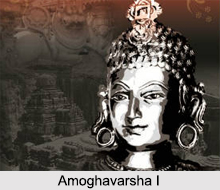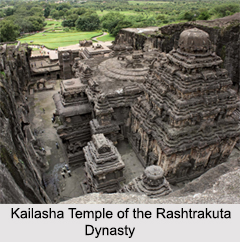 Amoghavarsha I was a Rashtrakuta King. He is remembered both as one of the greatest ruler of Rashtrakuta dynasty and amongst the great kings of India. He has been even compared with the legendary king Ashoka, the great by the historians. He was the son of Govinda III and also known as Nriputunga. He ruled from 814 CE to 874 CE. He ascended the throne at a very young age because of the death of his father. He was more of a scholar king who promoted art, culture and literature of the kingdom further and made it flourish under him. He patronized both Hinduism and Jainism. He retired from the throne quite often to follow the paths of religion.
Amoghavarsha I was a Rashtrakuta King. He is remembered both as one of the greatest ruler of Rashtrakuta dynasty and amongst the great kings of India. He has been even compared with the legendary king Ashoka, the great by the historians. He was the son of Govinda III and also known as Nriputunga. He ruled from 814 CE to 874 CE. He ascended the throne at a very young age because of the death of his father. He was more of a scholar king who promoted art, culture and literature of the kingdom further and made it flourish under him. He patronized both Hinduism and Jainism. He retired from the throne quite often to follow the paths of religion.
Early Years of Amoghavarsha I
He was born in Sribhavan in 800CE on the banks of river Narmada during journey of his father from his successful campaigns in the northern India. He ascended the throne at the age mere age of 14. Karka Suvarnavarsha, his guardian of Gujarat branch of empire was the cousin of former king. He was dethroned by a revolt that was led by some of his relatives along with the feudatories. Although it was for a temporary period of time, Amoghavarsha I re-established himself as the king by 821.
Initial Revolts of Amoghavarsha I
The first revolt was on the feudatory of Western Ghats which was led by king Shivamara II. He was killed in the series of battle in 816. The confidant and commander of Amoghavarsha I, Bankesha was also defeated in Rajaramadu by the king of Ganga, Rachamalla. Due to resilience of the Gangas, Amoghavarsha I was forced to obey conciliatory policy. He was married to King Buthuga"s daughter Chandrabbalabbe and another one Revakanimmadi, who was prince Ereganga"s daughter.
 Wars fought by Amoghavarsha I in South India
Wars fought by Amoghavarsha I in South India
Bhima Salki, the ruling feudatory of Rashtrakuta at Vengi was overthrown by Vijayaditya II of the Eastern Chalukya family. He took the throne and continued hostilities against the Rashtrakutas. He also captured the Stambha which is modern Kammamettu, a Rashtrakuta stronghold. Amoghavarsha I strongly defeated the Vengi Chalukyas from the Sangli and Cambay plates and drove them outwards of their stronghold in battle of Vingavalli. There is a record of Bagmura where a “Sea of Chalukyas†was mentioned that invaded the Ratta Kingdom which Amoghavarsha I successfully defended. After all of these victories, he assumed the title of “Veeranarayana.â€
Religion and Culture during Amoghavarsha I
He preferred remaining friendly with all the feudatories and neighbors. He avoided consuming aggressive postures against anybody at any cost. There is still a debate on whether he had abdicated the throne for fulfilling his religious pursuits or not. He had a deep sense of care for the subjects and whenever any sort of calamity threatened to cause harm, he offered his finger as a sacrifice to goddess Mahalakshmi of Kolhapur. He had often been compared to heroes like Shibi, Jimutavahan and Bali for such acts. It was found that rulers like the agadha, Vanga, Anga, Vengi and Malwa worshipped him.
His empire was among the four contemporary great empires of the world. As he was of a peaceful and loving nature, this is where his comparison with Emperor Ashoka came. The UNESCO heritage Jain Narayana temple of the Pattadakal, the basadi at Konnur and Neminatha basadi at Manyakheta were constructed during his rule. The writings like “Prashnottara Ratnamalikaâ€, “Mahapurana†by Gunabhadra and so on prove as evidence that he had taken up Jainism during his old age. Some of the famous scholars during his reign were Mahaveera, Shakatayan, Gunabhadra, Sri Vijaya, Jinasena and Virasena.



















